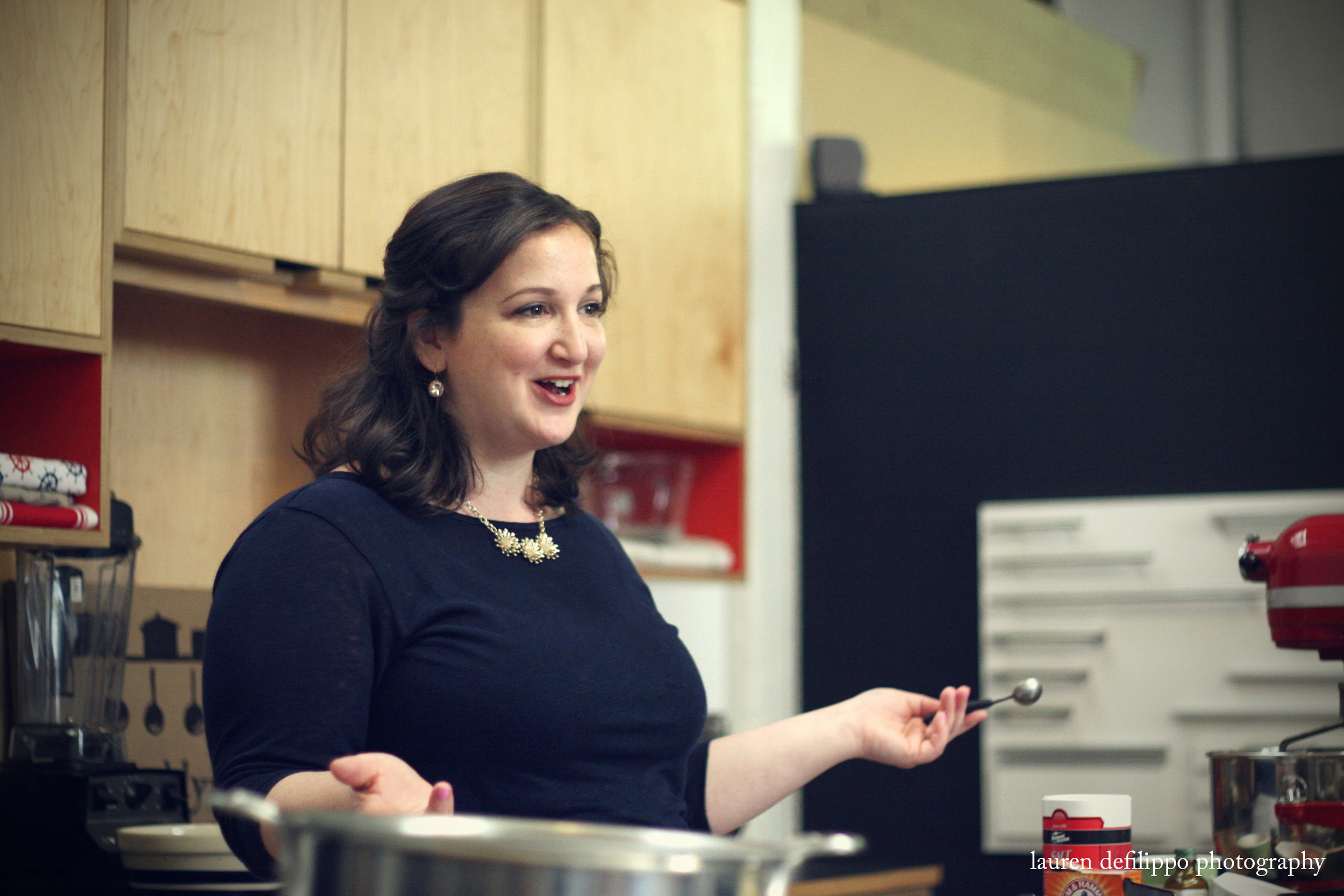Photos by Lauren DeFilippo
This weekend, writers, chefs and other food enthusiasts converged on Williamsburg's Wythe Hotel for the second annual Food Book Fair. This Brooklyn-based series of panels, cooking demos and food tours examined culinary innovation in food policy, media, trends and design, through the specific lens of food publications.
Deb Perelman of Smitten Kitchen
The fair kicked off with a cooking demo at Pure Kitchen, featuring self-taught blogger and cookbook author, Deb Perelman, of Smitten Kitchen. Deb's story is an unconventional one, having jumped into the blogosphere far before it was a full-fledged industry. With creative recipes—like "popcorn cookies"—and indulgent photography that feature her homespun style, Perelman is the quintessential example of a blog-to-book-deal success story.
Deb Perelman's "popcorn cookies", ready for baking.
Another interesting session considered "Food + Foraging", with Aska Chef Fredrik Berselius and professional forager Evan Strusinski. The two had a surprisingly non-dogmatic approach to foraging, with Strusinski, in particular, bristling at the trending term. As we munched on samples of locally found ingredients, it was an opportunity to consider the collective weight of terminology and how it influences our perception of individual purveyors or chefs.
Other talks related more specifically to publications, such as "Cookbooks + Art". The trend of chef-driven texts was discussed in most depth, in particular by panelist Anne McBride. In recent years, the importance of a chef's perspective has overtaken the historic prerequisite of producing a highly useable, instructional guide to cooking. Publishers are now willing to take chances on chefs whose food is unlikely to be replicated by home cooks, which has led to the production of such magnificent tomes as Modernist Cuisine or Heston Blumenthal's Big Fat Duck Cookbook. Design, in turn, has shifted to support these more personal, artistic statements of chefs, and not only on the high end of the culinary industry.
Design was also a large part of the focus at "Foodieodicals", a day-long fair of printed food magazines and pamphlets from around the world. From the highly-saturated style of Tokyo's inexpensive, newspaper-like Rocket, to the scratch-n-sniff whimsy of Swallow Magazine's latest issue, the range of perspectives of what a magazine should look or feel like was endless. As far as the content, it ran the gamut from editorial, to literary and even intentionally "nerdy", as in the case of Cereal, whose content most caught my eye.
There was a food publication for all levels of kitchen proficiency and palate training, a spectrum that represented our growing insatiability for food, distanced from the actual plate. Based on some of the edgier publications presented by the weekend's panelists, such as Christopher Lopez-Thomas of White Zinfandel, we can only expect that the industry will continue to grow in unexpected ways, creating not only new styles of content, but also innovative designs that further explore our relationship with food.




